- mojzis-methods.com - The Mojzis Method and infertility treatment
- cviceni-mojzisova.cz - Exercises by Ludmila Mojzisova
- dk.upce.cz - Pedagogical aspects in the treatment method of Ludmila Mojzisová, Jarmila Novotná.
- researchgate.net - Ludmila Mojzisova and her legacy in health physical education, Jitka Vařeková.
Ludmila Mojžíšová's method: exercises to promote pregnancy? What does it help?
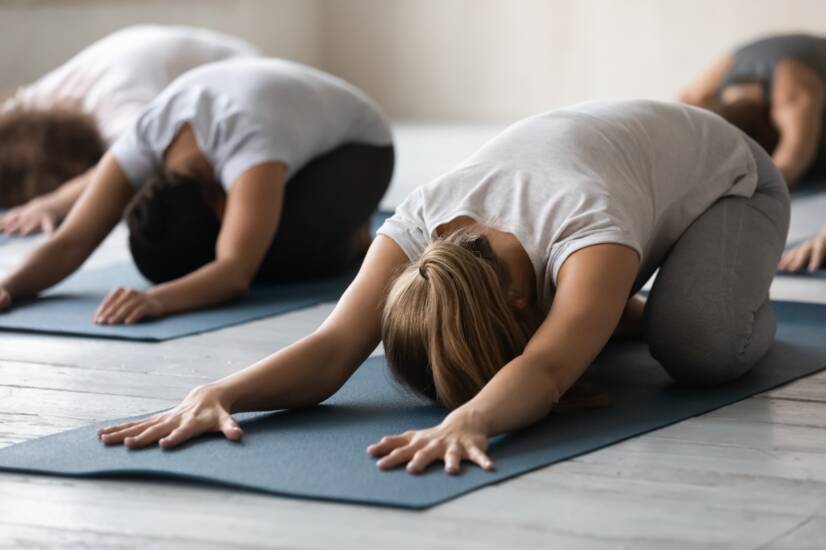
Ludmila Mojžíšová's physiotherapy method is based on specific exercises and postures that help in the treatment of gynaecological diagnoses. The method is especially known for its success in the treatment of functional sterility (infertility).
Article content
- Who is Ludmila Mojžíšová?
- What does functional gynecological disorder mean?
- Physiotherapy in gynaecology
- The importance of the pelvic floor
- The principle of the Ludmila Mojžíšová method
- Therapeutic effect of therapy
- Treatment of functional sterility (infertility)
- Success rate of the method
- Examples of exercises
How does the Ludmila Mojžíšová method work? When is it suitable and when is it not?
Who is Ludmila Mojžíšová?
Ludmila Mojžíšová (1932-1992) was a Czech therapist and doctor who worked mainly in Prague during her lifetime. She was involved in physiotherapy and rehabilitation in gynaecology.
During her practice she expanded the exercise method and successfully eliminated functional gynaecological musculoskeletal disorders (painful menstruation, incontinence, infertility, painful sexual intercourse and others).
She worked closely with the renowned gynaecologist Professor Eugene Cech. Together they tested and perfected the method. Yet many doctors even today do not believe in its effectiveness.
Ludmila Mojžíšová accompanied athletes at top competitions, including the Olympic Games. She worked especially with gymnasts, athletes, tennis players and basketball players.
Several professional and publicly available books have been published on the method. Today, the method can be used under the supervision and instruction of a trained therapist - a graduate of a university medical education and an accredited professional course.
What does functional gynecological disorder mean?
It is a disorder of the function of the genital organs without an obvious structural organic cause (endometriosis, cervical cancer, cysts and polyps, PCOS, inhospitable environment of the uterus, and others).
Thus, the cause is of a functional nature - imbalances and deviations in the musculoskeletal apparatus of man.
The primary role in gynecological physiotherapy is played by the pelvic region and pelvic floor muscles.
Physiotherapy in gynaecology
Physiotherapy as a medical discipline dealing with the diagnosis and treatment of the musculoskeletal system also includes the field of gynaecology.
It is applied in a wide range of health areas and diagnoses:
- Pregnancy and obstetrics
- Menstrual cycle disorders
- Pelvic floor dysfunction
- Urogynaecological surgeries
- Functional sterility
- Sexuality disorders
- Incontinence
The importance of the pelvic floor
The pelvic floor is an anatomically complex structure made up of muscles and fascia that together form a bowl-shaped shell of the pelvic cavity.
An important function of the pelvic floor musculature is to maintain the correct position, stability, mobility and function of the pelvic organs. The pelvic floor musculature also stabilises the pelvic plexus at rest, standing and during movement.
The pelvic floor muscles work closely with the deep abdominal muscles, the back muscles and the diaphragm. Together they form the functional concept of the HSS - the deep stabilization system of the body.
Its main function is to stabilize the spine, abdominal organs, maintain the correct breathing pattern and regulate intra-abdominal pressure.
Another function is closure. The pelvic floor reflexively balances the pressure in the abdominal cavity in situations such as coughing, sneezing or lifting loads.
If the bladder or bowel is full at that moment, the pelvic floor reflexively reacts and closes the corresponding muscle sphincter.
The subsequent function is exactly the opposite, namely to deflate and relax the muscles and sphincters during urination, defecation or childbirth.
The last but important function is to relax the pelvic floor and allow the sexual organ to enter the vaginal entrance of the woman. The pelvic floor plays an important role in the function of the sexual organs and the overall experience of sexuality and possible pregnancy.
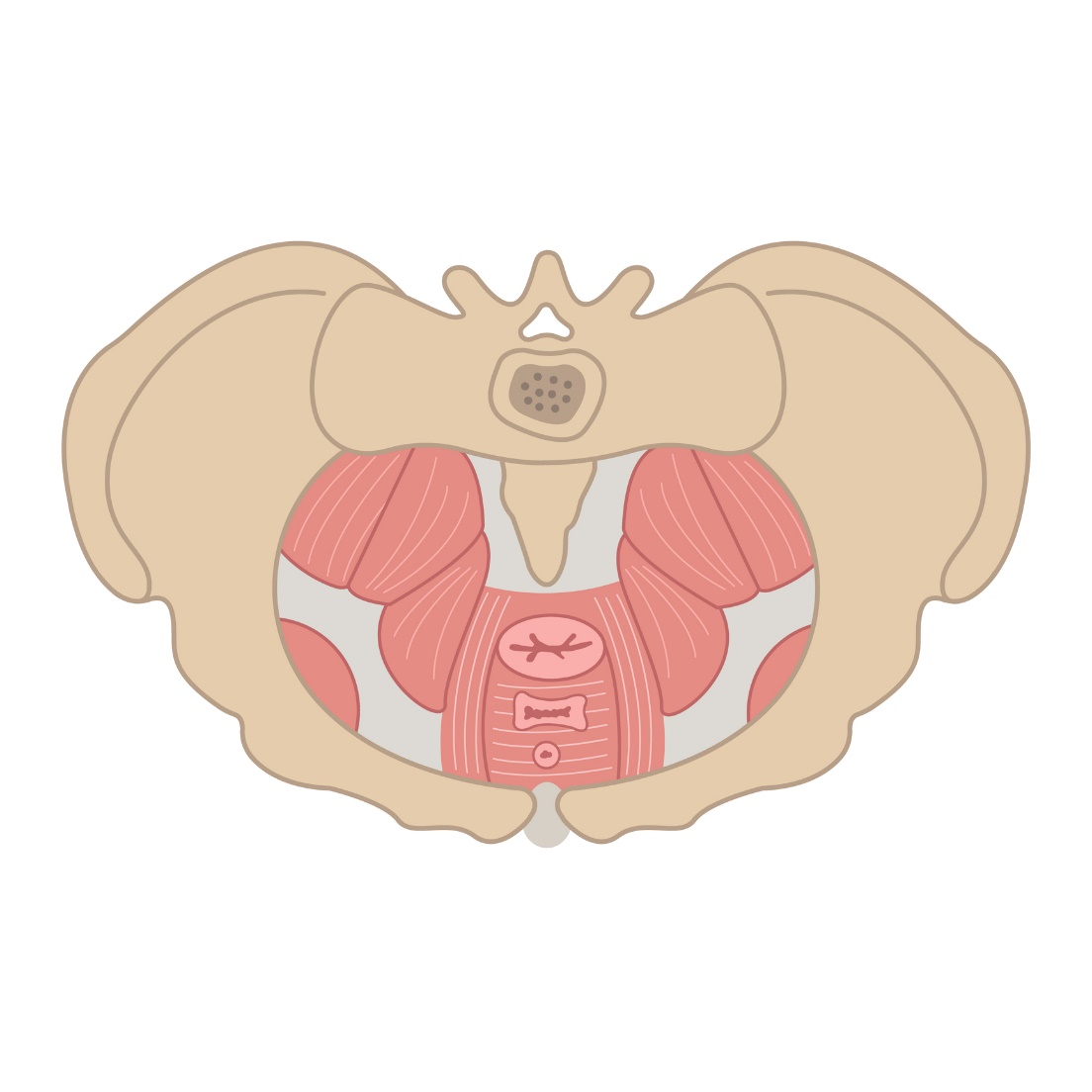
The principle of the Ludmila Mojžíšová method
The basic principle of the method is a set of specific exercises and positions. The patient is initially thoroughly educated and trained by the therapist for daily home exercises.
In the initial stages, the patient exercises under the supervision of a trainer and regularly visits a rehabilitation clinic. Individual sessions are gradually less frequent.
To achieve the desired effect of the treatment, it is necessary to exercise independently for a long time several times a day.
In addition to active exercise, Ludmila Mojžíšová's method includes a series of passive correction sessions with a physiotherapist.
The physiotherapist applies:
- Mobilization of the spinal joints and ribs
- Mobilization of the skeleton
- Mobilization of the sacroiliac joint
- Myofascial techniques
- Reflex manual techniques
- Soft and massage techniques
- Removal of muscle spasms
- Passive stretching and abduction positions
- Pelvic floor release/strengthening
Therapeutic effect of therapy
The aim of the exercise routine is to increase blood flow and circulation in the pelvic floor and genital area.
The exercises eliminate muscular imbalances in the musculoskeletal system - overloaded and shortened muscles are relaxed. On the contrary, weakened and hypotonic muscles are strengthened.
The aim of the therapy is to find and subsequently eliminate the functional problem.
The therapy focuses on:
- Improving the condition of the pelvis and spine.
- Adjusting the position of the genital organs
- Strengthening the gluteal muscles
- Relaxation of the cervical spine and skeleton
- Teaching correct movement stereotypes
- Elimination of pelvic floor spasms
- Automation of the joints
- Improving blood circulation to the small pelvic area
- Strengthening of weakened muscle groups
Prior to the actual therapy, a thorough kinesiological analysis, history taking and goal setting is performed.
The therapist will examine pelvic position, pelvic blockages, muscle tone, reflex reactions of soft structures and assess the patient's movement patterns both factually and palpation.
An important investigative and therapeutic element is the per rectum or per vaginam examination. This involves the insertion of the therapist's finger through the patient's rectum or vagina.
Contractions, relaxation, tone and any muscle spasms of the pelvic floor and sphincter muscles are assessed.
Indications for therapy:
- Functional sterility
- infertility (inability to sustain a fetus)
- dysmenorrhoea (painful menstruation)
- amenorrhoea (omission of menstruation)
- dyspareunia (painful intercourse)
- pelvic and skeletal pain
- cervical spine pain
- vertebrogenic algic syndrome
- obstipation
- scoliosis
- urinary incontinence
- pelvic floor dysfunction
- male sterility
Contraindications to mobilization and automobilization techniques are increased bone fragility, active inflammation, post-traumatic condition and unhealed fracture.
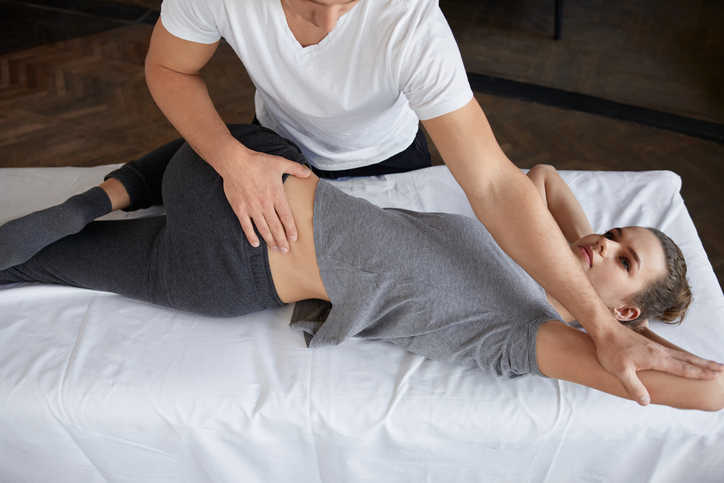
Treatment of functional sterility (infertility)
Sterility is a condition in which a woman is unable to conceive with regular sexual intercourse (twice a week) for one year.
Organic sterility is caused by a pathological finding that is diagnosed by a physician. Regardless of the cause and etiology, it is necessary to investigate the fertility of the partner.
Functional sterility refers to a functional disorder of the musculoskeletal system and psychogenic influence. Muscular imbalance occurs.
On the principle of somatovisceral (muscle-organ) relations, there is dysfunction of the pelvic floor muscles, contraction of the smooth muscles of the genital organs and the vascular walls of the small pelvic area.
Sterility is very psychologically demanding for the woman and can cause excessive stress. Psychological problems and stress also reflexively affect the musculoskeletal system, which must be addressed in therapy. Therefore, it is necessary to include a psychosocial factor in the treatment of sterility.
Clinical findings of functional sterility include skeletal, lumbar spine and symphysis pain.
Painful irritation points (stretched muscle fibres) in the pelvic floor, inner thighs, gluteal muscles and longitudinal muscles of the spine are common.
A possible concomitant symptom of a pelvic floor problem is an incorrect breathing stereotype. This involves pulling in the abdominal wall and stretching of the rectus abdominis muscles.
Conversely, the transverse abdominal muscles are weakened. There may be an improper interplay between the diaphragm and pelvic floor.
Success rate of the method
The success of the Ludmila Mojžíšová method depends on the full and honest cooperation of the patient and the therapist.
According to the percentage statistics given in the book The Ludmila Mojžíšová Method from A to Z, 70-80% of women experience an improvement in vertebrogenic structural and functional gynaecological diseases with regular exercises and complete therapy.
After completing the method, 30-33% of women are able to become pregnant and eliminate functional sterility.
In 1990, a certificate was issued for this treatment method under the title: Rehabilitation treatment of some types of functional female sterility.
Examples of exercises
In the active part of the therapy, 10 (or 12) specific exercises and positions are explained to the patient in turn. Emphasis is also placed on correct breathing.
The exercises are performed daily, over a long period of time, in a precise order and with a precise number of repetitions.
The aim is to relax and stretch the soft structures of the lower spine, strengthen the abdominal muscles, motorise the hips, pelvis, ribs, activate and relax the pelvic floor muscles.
Consultation and education by a trained therapist is recommended to achieve effectiveness and avoid mistakes.
Below are examples of Ludmila Mojžíšová's most famous exercises.
Relaxation exercise "cat"
Fingers outstretched, toes pointing forward. Arms and torso and thighs and torso together at right angles. Head hanging down at all times.
With an inhalation, the trunk rises as high as possible, the abdomen contracts, the buttocks contract, and then there is a moment of staying. The patient exhales, relaxes, and drops relaxed between her own shoulders and hips.
The purpose of the exercise is to automate the thoracic and hip segments. The entire length of the spine is relaxed and loosened.
The gluteal muscles are strengthened and the posture of the pelvis is changed with stretching of the corresponding ligamentous structures.

Relaxation exercise "baby"
The position starts in the supine position. The patient hugs her knees with both hands and interlaces her fingers so that her elbows are extended.
From this basic position, she pulls her knees towards her abdomen so that the tailbone lifts off the mat and the glutes "unstick".
The elbows may be rolled out to the sides. The arm muscles are working, not the shoulder and neck muscles. There is a moment of endurance in the child's position. Breathing is natural and gradual.
The purpose of the exercise is to mobilise the fourth and fifth vertebrae and the sacrum. The pectoral muscles are strengthened and the entire cervical spine is stretched.
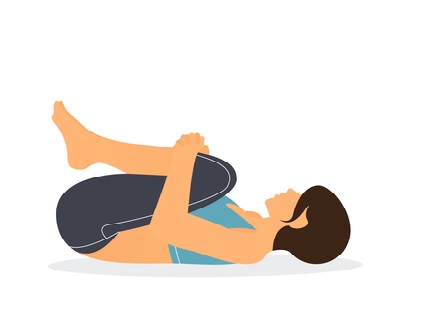
Relaxation exercise "trunk rotation"
The basic position starts on all four limbs. The head does not drop between the shoulders. The knees are level with the width of the hips.
After inhalation, one arm is raised and rotation in the thoracic spine occurs while the eyes follow the fingers of the hand. The arm of the upper limb on which the patient leans remains above the hand and the hips above the knees throughout the exercise.
After exhalation, the arm slowly returns to the basic position. Perform the exercise alternately with the right and left hands.
The purpose of the exercise is to mobilise the cervical and thoracic spine, transition the thoracic and lumbar spine and stretch the pectoral and cervical muscles.
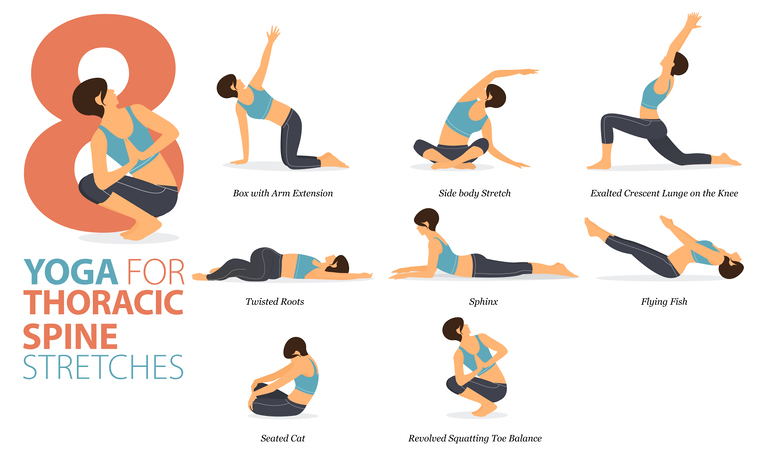
Interesting resources
Related










